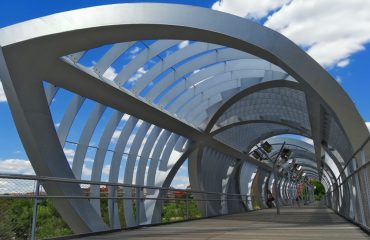Universal Parallel Flange (UPN) profiles, also known as parallel flange channels, are ubiquitous in structural engineering projects. Their versatility and readily available properties make them a popular choice for a wide range of applications. This comprehensive guide delves into the intricacies of UPN profiles, providing valuable insights for engineers and students alike.
Understanding UPN Profile Geometry and Properties
UPN profiles are characterized by their parallel flanges and a web connecting them. This distinct geometry provides excellent bending resistance, making them suitable for applications where bending loads are significant. Key geometrical properties include the overall depth (height), flange width, web thickness, and overall width. These dimensions dictate the section’s area, moment of inertia (I), section modulus (Z), and radius of gyration (r). These properties are crucial for structural calculations and are readily available in steel section handbooks or online databases. Understanding these properties is fundamental to selecting the appropriate UPN profile for a specific design.
Applications of UPN Profiles in Structural Design
The versatility of UPN profiles leads to their widespread use in various structural applications. They are commonly used as:
- Beams: Supporting loads over spans, such as in roofing structures, walkways, and balconies.
- Columns: Resisting compressive loads in frameworks and supporting vertical loads.
- Bracing Members: Providing lateral stability to structures and preventing buckling.
- Lintels: Supporting masonry above openings in walls.
- Secondary Structural Elements: Used in conjunction with other structural members to enhance the overall strength and stability of the structure.
The choice of UPN profile depends on the specific loading conditions, span length, and required load-bearing capacity. Proper selection ensures the structural integrity and safety of the design.
Material Considerations and Selection of UPN Profiles
UPN profiles are typically manufactured from structural steel, which offers a high strength-to-weight ratio. The material grade influences the yield strength and ultimate tensile strength, directly impacting the load-carrying capacity. Common steel grades include S235, S275, and S355, each with different yield strengths. Selecting the appropriate steel grade depends on the design requirements and relevant building codes. Factors such as corrosion resistance, weldability, and fabrication ease should also be considered when selecting the material and profile.
Design Considerations and Calculations using UPN Profiles
Designing with UPN profiles involves several crucial considerations. Engineers must perform detailed calculations to ensure the selected profile can withstand the anticipated loads and stresses. This typically involves:
- Load Determination: Accurately determining dead loads (self-weight of the structure) and live loads (occupancy loads, snow loads, wind loads).
- Stress Analysis: Calculating bending stresses, shear stresses, and deflection using appropriate engineering formulas and software.
- Stability Checks: Verifying that the profile is adequately stable and will not buckle under compressive loads.
- Connection Design: Ensuring that the connections between UPN profiles and other structural elements are strong enough to transfer the loads effectively.
- Compliance with Codes: Adhering to relevant building codes and standards to ensure safety and structural integrity.
Software tools like structural analysis programs can significantly aid in these calculations, automating many of the complex steps involved.
Advantages and Disadvantages of Using UPN Profiles
Like any structural member, UPN profiles possess both advantages and disadvantages.
Advantages:
- Cost-effective: Generally more economical than other structural sections for many applications.
- High Strength-to-Weight Ratio: Provides good load-bearing capacity without excessive weight.
- Easy Fabrication: Relatively easy to cut, weld, and drill, simplifying construction.
- Widely Available: Readily available from various steel suppliers.
- Versatile: Suitable for a range of applications.
Disadvantages:
- Limited Shear Capacity: Compared to other sections, their shear capacity can be a limiting factor in some designs.
- Susceptibility to Torsional Buckling: May be prone to twisting under certain load conditions.
- Corrosion: Requires appropriate protection against corrosion, especially in harsh environments.
A careful evaluation of these factors is essential before selecting UPN profiles for a particular structural design.
In conclusion, UPN profiles are a valuable asset in the structural engineer’s toolbox. Understanding their properties, applications, and limitations is crucial for designing safe and efficient structures. This detailed guide provides a solid foundation for engineers and students alike seeking to master the use of these versatile steel sections.




